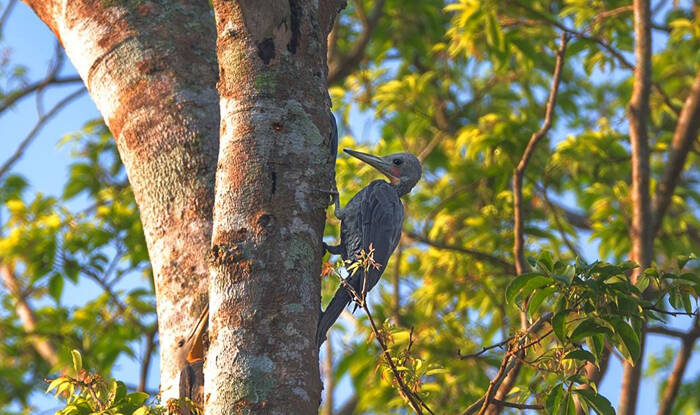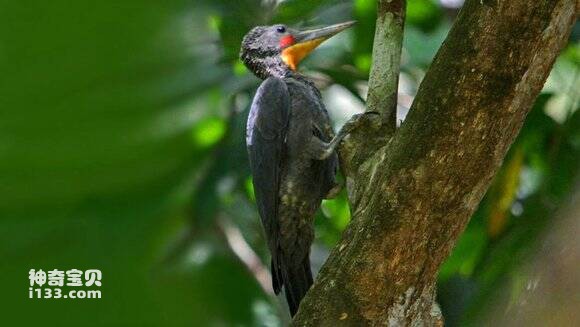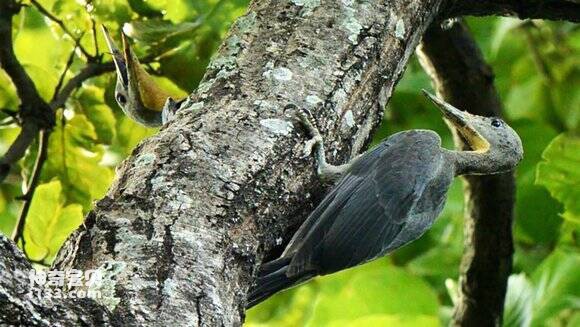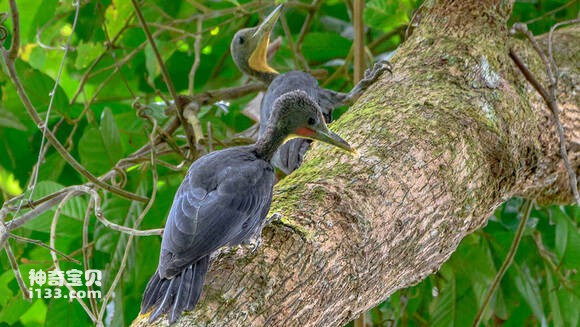Great slaty woodpecker
IUCN
LCBasic Information
Scientific classification
- name:Great slaty woodpecker
- Scientific Name:Great slaty woodpecker,Mulleripicus pulverulentus
- Outline:Climbing birds
- Family:Picipitidae Picidae G.G.Woodpecker
Vital signs
- length:50-51cm
- Weight:About 150-200g
- lifetime:About 10-15 years
Feature
Slate grey throughout, yellow throat skin
Distribution and Habitat
The Great Gray Woodpecker is distributed in Cangyuan and Xishuangbanna in southern Yunnan within China. Outside China, it is distributed in India, Myanmar, Thailand, Indochina, the Philippines and Indonesia.
The Great Gray Woodpecker mainly inhabits evergreen broad-leaved forests and secondary forests in low mountains and foothill plains below 1,000 meters above sea level, and also appears in open fields with scattered bushes and sparse trees.
Appearance
The male Great Gray Woodpecker has short and broad red jaw lines; the chin, throat and front neck have yellow skin, with the chin being the lightest. The throat and front neck are often decorated with red; the rest of the upper and lower body feathers are slate gray, with the head feathers being the lightest and pointed, and decorated with fine light gray spots. The female bird is similar to the male bird, but has no red jaw lines, pale yellow skin on the front neck, and no red staining. The iris is dark brown or reddish brown, the mouth is dark gray or light off-white, sometimes embellished with blue, and the peak and tip of the mouth are black. The legs are blue-grey, sometimes tinged with green.
Size measurement: body length 500-510 mm, mouth peak 60-69 mm; wings 221-245 mm, tail 134-162 mm, tarsometatarsus 39-41 mm.
Details
Great Slaty Woodpecker is a large gray woodpecker with two subspecies.

Great Slaty Woodpecker is a resident bird, often in small groups of 4 to 6. They live mostly in trees, often moving from one tree to another. They fly clumsily, flapping their wings vigorously, often making loud noises. They also fly high, sometimes flying over the highest treetops, chasing each other and chirping as they fly. They mainly feed on ants and insects, including Coleoptera, Lepidoptera, Geometridae larvae, Tettigoniidae, Acrididae, Noctuidae larvae, Leptinotarsa larvae, Sphenopsidae larvae, butterfly larvae, caterpillars, crickets, mantises and other insects, and also eat a small amount of plant fruits and seeds.

The Great Gray Woodpecker nests in tree holes, laying 3-4 eggs per nest. The size of the eggs is 32-43×27-35 mm, and the male and female take turns incubating the eggs.

The Great Gray Woodpecker has been listed as a vulnerable species due to its rapid population decline in the past 20 years due to the reduction of forest coverage.

Listed in the "Red List of Threatened Species of the World Conservation Union" (IUCN) 2016 ver 3.1 - Vulnerable (VU).
Listed in the "National List of Terrestrial Wildlife with Important Economic and Scientific Research Value" (Item 300) issued by the State Forestry Administration of China on August 1, 2000.
Listed in the second level of China's "National Key Protected Wildlife List" (February 5, 2021).
Protect wildlife and eliminate game.
Maintaining ecological balance is everyone's responsibility!








